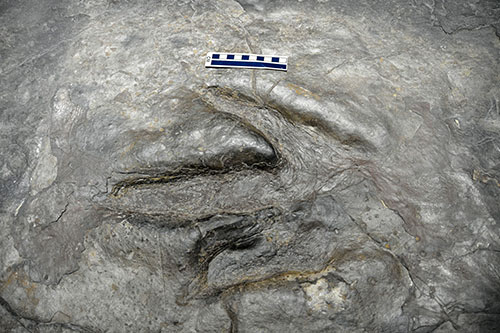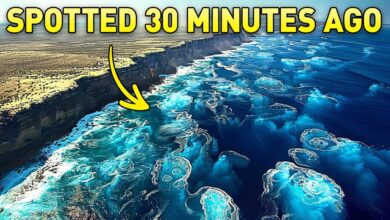UK’s biggest ever dinosaur footprint site discovered

Dinosaur fossils not only help us understand these ancient animals through fossil bones, but also through their footprints. Scientists in Oxfordshire have recently discovered one of the largest dinosaur footprints ever found in the UK, hoping to help them learn more about how dinosaurs moved.
The footprints were discovered in a limestone quarry when a worker noticed anomalies in the ground. At first, the worker thought they were just an unusual lump of soil, but after closer inspection, he realised they were footprints.

Over the summer, scientists, students and volunteers worked together to excavate and discovered around 200 footprints, some of which were up to 150 metres long, making it the largest dinosaur footprint site in the UK and one of the largest in the world.
The first footprints discovered belonged to a *sauropod*, a type of herbivorous dinosaur with a huge, long neck. However, scientists quickly realized that this was not the only one, as they discovered footprints from other *sauropod* species, as well as a smaller, two-legged carnivorous dinosaur called a *megalosaur*.

The area was once a tropical lagoon, and the dinosaur footprints were formed as the animals moved through the mud. What is special is that the footprints were not washed away, but were probably perfectly preserved by a storm, which may have covered them with sediment, helping to preserve them.
Dinosaur footprints provide an insight into the lives of these animals, including how they moved, how fast they moved, and what habitat they lived in. This is information that fossilized bones cannot provide.
At the Oxford Museum of Natural History, a specimen of *megalosaurus* – the largest carnivorous dinosaur from the Jurassic period in Britain – is on display. The specimen is considered one of the most important fossils in the world. However, the excavation site is still an active quarry, and although efforts are being made to preserve the footprints, quarrying will continue for several years. Palaeontologists hope to uncover more dinosaur footprints in the future.

Professor Richard Butler, a palaeontologist, stressed the importance of the discovery in better understanding the history of the UK and the prehistoric world. To reconstruct and study the area, scientists used modern imaging technology such as drones to record the entire excavation site.
They took around 20,000 photos, creating detailed 3D models of the area. This helps preserve a permanent digital record of the area, even if the physical site may not be preserved. These records will help future scientists continue to study and share their discoveries about this prehistoric past.








